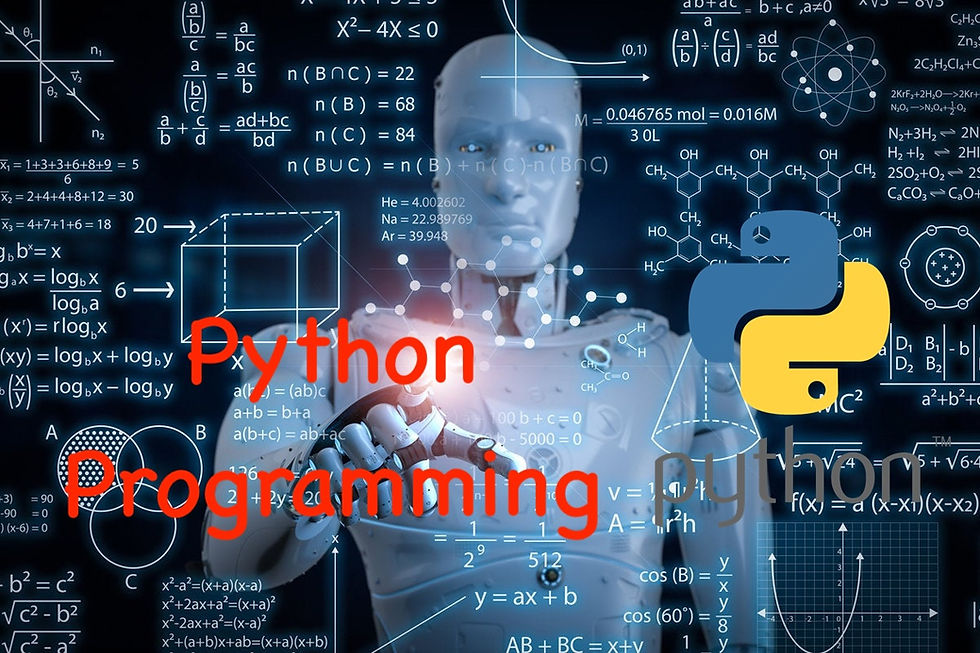Part 12: Mastering Exploratory Data Analysis (EDA): A Beginner's Guide
- Revanth Reddy Tondapu
- May 23, 2024
- 3 min read

Hello everyone! Today, we’re diving into an essential part of data science: Exploratory Data Analysis (EDA). EDA is like being a detective; you’re investigating your data to understand it better and figure out how to tackle your problem effectively. If you want to be good at EDA, or even become an expert, this guide is for you. Let's get started!
Why is EDA Important?
In any data science or machine learning project, more than 60% of your time is spent on tasks like data analysis, feature engineering, and feature selection. These tasks are crucial because they form the backbone of your entire project. A good EDA can significantly improve the accuracy of your model by ensuring that your data is clean and well-prepared.
The EDA Lifecycle
Step 1: Understanding Your Data
The first step in EDA is to understand your data. This involves looking at the data types, the number of rows and columns, and getting a general sense of what each column represents.
import pandas as pd
# Load a sample dataset
df = pd.read_csv('sample_dataset.csv')
print(df.head())
print(df.info())Step 2: Handling Missing Values
Missing values are like gaps in a puzzle. To get a complete picture, you need to handle these gaps properly. There are different techniques to handle missing values, such as filling them with the mean, median, or mode, or even using more advanced methods like forward fill or backward fill.
# Check for missing values
print(df.isnull().sum())
# Fill missing values with the mean
df['column_name'].fillna(df['column_name'].mean(), inplace=True)Step 3: Handling Categorical Features
Categorical features are columns that contain categories, like gender or day of the week. These need to be converted into a numerical format that machine learning models can understand. Common techniques include one-hot encoding and label encoding.
from sklearn.preprocessing import OneHotEncoder
# One-hot encode the 'gender' column
one_hot = pd.get_dummies(df['gender'])
df = df.join(one_hot).drop('gender', axis=1)Step 4: Feature Engineering
Feature engineering involves creating new features or modifying existing ones to better capture the underlying patterns in your data. This could involve creating interaction terms, polynomial features, or even domain-specific features.
# Create a new feature: total amount spent (quantity * price)
df['total_spent'] = df['quantity'] * df['price']Step 5: Feature Selection
Feature selection is about identifying which features are most important for your model. There are several techniques for this, including correlation analysis, forward selection, and backward elimination.
import seaborn as sns
import matplotlib.pyplot as plt
# Correlation matrix
corr = df.corr()
sns.heatmap(corr, annot=True, cmap='coolwarm')
plt.show()Step 6: Visualization
Visualization helps you see patterns, outliers, and trends in your data. Libraries like Matplotlib and Seaborn are great for creating various types of plots.
# Histogram for the 'age' column
sns.histplot(df['age'], kde=True)
plt.title('Age Distribution')
plt.xlabel('Age')
plt.ylabel('Frequency')
plt.show()Tips for Becoming an EDA Expert
Practice Regularly: The more datasets you explore, the better you’ll get. Try to work on different types of data to broaden your skills.
Learn from Others: Look at how experts handle EDA by checking out Kaggle kernels, blogs, and articles.
Stay Curious: Always be on the lookout for new techniques and tools that can help you improve your EDA skills.
Master the Basics: Make sure you are comfortable with Python libraries like Pandas, NumPy, Seaborn, and Matplotlib. These are essential for any data analysis task.
Experiment: Don’t just stick to one method. Try different techniques to handle missing values, categorical features, and feature selection to see what works best for your data.
Conclusion
Exploratory Data Analysis is a crucial step in any data science project. By following a structured approach and continuously learning and practicing, you can become proficient in EDA. Remember, the more you explore and understand your data, the better your models will perform.
I hope you found this guide helpful and motivating. Keep practicing, stay curious, and happy analyzing!
Comments